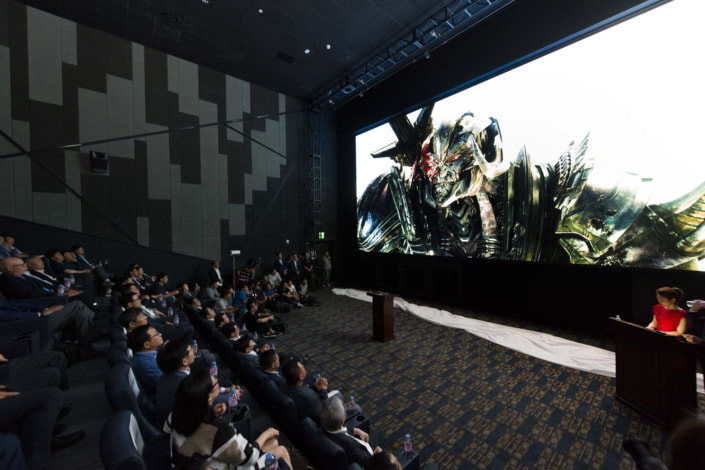|
There’s been a lot of buzz in the last 2 years about QLED technology and Quantum Dots that drive it. They claim more contrast, more color, brighter picture, more energy efficient, etc. The Quantum Dot technology is very promising! If you have 4 minutes, here’s a quick video on how Quantum Dots work.  If you have an hour Scott Wilkinson at Home Theater Geeks gets really deep into it with some of the folks at Nanosys: Sounds cool right? Well, as with every type of TV technology, there is some confusion on what is really going on. Here’s the problem…remember when “LED TVs” first hit the market? Everyone was (and still does) calling them “LED TVs”. Were they LED? Well kinda. The LED part of the TV refers the light source, or the backlight. The actual panel which makes the image is technically an LCD panel (stuff we’ve been using since the days of the electronic calculator) but now with a much better backlight solution. This was a massive improvement ESPECIALLY over CCFL bulbs. We saw some immediate improvements in contrast, color, efficiency, and all of a sudden TVs were super thin. These are all good things, but we are still dealing with the shortcomings of LCD. If we are being technical accurate these would be called LED/LCDs TVs! Fast forward to the first QLED TVs. Quantum Dots sound really cool…even futuristic. Almost like something out of Star Trek! QDs are going to solve all of the problems with LCD right? Better viewing angles, more color saturation, better dynamic range, better screen uniformity, and the promises of world peace, right? Wellkinda… QLED TV’s are not Quantum Dot panels…they are traditional LCD panels with a Quantum Dot backlight. This is still a big deal as the Quantum Dots can get brighter and are much more efficient than LEDs. Now the manufacturers can make the TVs even thinner and even brighter which is what the masses seem to love. But is this a good solution to overcome the shortcomings of LCD panels? Not quite. Fast forward to March of 2017. Samsung announced the acquisition of Harman International. This was a big deal. Harman International seems to be involved with everything A/V from automotive to commercial theater applications. When the news was released I remember thinking to myself that it made sense but I hadn’t quite connected the dots until Summer of 2017. Don’t get me wrong. I love going to the movie theater. There’s nothing like being in a room with hundreds of other people screaming in terror with the little girl crawls out of the well at the end of “The Ring”. Experiencing “Avatar” in 3D on a 70” IMAX screen was unbelievable. I swear I could reach out and grab theWoodsprites right out of thin air. And the sound in the commercial theater? I can’t even come close to that at home without a dedicated room with a six figure budget. The theater is still fun, but I have to have to be honest with myself when I say that I do not go to the theater for the image quality. Sure the screen is huge, but it doesn’t look that great, especially if you compare it to your high end flat panel at home. Sure the TV at home is only 65” but it looks much better! I was convinced that I would never see the Holy Trinity of A/V…a huge screen, that looks great, with a bone rattling audio system. Fast forward to July of 2017. Samsung announced their Cinema LED Screen. Is this the game changer that we have all been waiting for? Since the late 1800s we have been going to theaters and looking at the same technology…a projector with a screen. As I mentioned before, we can make some really BIG images but they never look that great. As we know from studying how our eyes work and how our brains interpret light waves, Dynamic Range is the #1 important aspect of picture quality. Simply, Dynamic Range describes the difference between the darkest and the brightest part of an image. Nobody likes a washed out picture regardless of how many pixels are on the screen. An OLED (and even some of the best LED/LCDs) can make very impressive black levels. How can a device such as a projector make perfect black like an OLED? Projectors project light pretty well but they have a hard time projecting black! The result is washed out picture with desaturated colors. Two things that our eyes and brains HATE! Samsung’s Cinema LED Screen gives us the best of both worlds. Each pixel is its own light source that can turn off (black) or get bright based on the scene, just like OLED. The resolution is true 4k (4096x2160), HDR compatible, WCG compatible, and here’s the best part…it’s 33.8” wide! No more need for a projector and a screen as this is a true LED screen technology. As great as this sounds it will be a while before these theaters are common. By 2020 we are only expecting to see 10% of theatres across the world adopt this technology. My guess is that it’s pretty pricey! So if we aren’t going to see this in theaters until 2020, that means that we won’t see it in the home until somewhere around 2025, right? Well kinda... This week at CES 2018 in Las Vegas, Samsung revealed a pretty interesting new display dubbed “The Wall”. A modular 146” “micro LED” HDR/WCG display capable of infinite contrast (like OLED) but at 2000nits (like a REALLY bright LED/LCD). This sounds a lot like a residential version of the Cinema LED Screen, and the best part is that this isn’t some “made for CES” display…according to Samsung these will be shipping THIS YEAR! Now we wait to see a price… So as always I have more questions than answers… Will Cinema LED screens eventually replace the old 2 piece projection systems in commercial theaters? I sure hope so! With the acquisition of Harman International mean that Samsung is taking aim at some market share in the commercial theater industry? Probably! Will “Micro LED “ displays become the gold standard and replace OLED and LCD (QLED or LED)? Only time will tell. Will there ever be a singularity in TV technology? Probably not, but what I do know after working in this industry for a long time (19 years this year!) is that the competition is fierce. Some technologies will die (cough cough plasma and CCFL LCD) while some will thrive and lead us up to the next big thing. “Minority Report” anyone???
0 Comments
Leave a Reply. |
Third Party Reviews & Articles
SIX-G Generator
Archives
July 2024
Categories |
|
|
© Copyright 2015-2023
Home Contact Us About Us Careers Warranty 2222 E 52nd Street North, Suite 101, Sioux Falls SD 57104 +1 605-330-8491 [email protected] |



 RSS Feed
RSS Feed